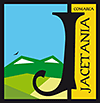Bailo
Ayuntamiento de Bailo
Plaza Mayor,2 - 22760 BAILO
T. (+34) 974 377 074
secretaria@bailo.es
This southernmost municipality of the Jacetania area is located at the foot of the San Juan de la Peña range and at the base of the slope leading to the St Barbara Pass. This traditional communication route between the Pyrenean valleys and the Huesca Depression is confirmed by the Roman road (no. 33 in the Antonine Itinerary) which enters Spain through the Palo Pass and was the main route to Huesca until the second half of the 20th century. Bailo dominated the lands on the left bank of the Aragon river, which flowed through the intra-Pyrenean depression, and took on the role of agricultural centre with its broad extensions of arable land and great irrigation potential. The accessible hills that surround it and the large extensions of scrubland make it ideal for small game hunting. With an altitude of 700 metres, temperatures here are milder and it has less rainfall than its neighbouring villages.
The popular architecture of Bailo is typical of the Pyrenean foothills, with lower buildings designed around its agricultural activities. It claims to make the best bread in the Jacetania area. Apart from the church with its attractive exterior patio and Romanesque font, Bailo has an interesting square and several notable houses.
Its surroundings are ideal for rambling with its low hills and a network of tracks to the other villages in the municipality – Arbués, Alastuey, Arrés and Larués. All these have interesting examples of civil and religious architecture.
The municipality of Bailo has a wealth of birdlife due to the variety of ecosystems in its surrounding area. First among these are the groves of Mediterranean gall oak, holm oak and pine and the extensive fields of arble land, while not forgetting that it is also at the foot of the Santo Domingo and San Juan ranges. Indeed, the municipality is part of the Cultural and Natural Park of San Juan de la Peña. In terms of raptors, it is possible to see lammergeiers, kites, hawks, kestrels, eagle owls, griffon vultures, goshawks, booted eagles, Bonelli’s eagles and golden eagles, to name just a few. Furthermore, it is a transit area for migratory birds, such as cranes, travelling to and from central Europe in the spring and autumn.
Other villages in the municipality: Arbués – Alastuey – Arrés - Larués
Text taken from the Jacetania Area Signposting Plan. 2001-2006
The popular architecture of Bailo is typical of the Pyrenean foothills, with lower buildings designed around its agricultural activities. It claims to make the best bread in the Jacetania area. Apart from the church with its attractive exterior patio and Romanesque font, Bailo has an interesting square and several notable houses.
Its surroundings are ideal for rambling with its low hills and a network of tracks to the other villages in the municipality – Arbués, Alastuey, Arrés and Larués. All these have interesting examples of civil and religious architecture.
The municipality of Bailo has a wealth of birdlife due to the variety of ecosystems in its surrounding area. First among these are the groves of Mediterranean gall oak, holm oak and pine and the extensive fields of arble land, while not forgetting that it is also at the foot of the Santo Domingo and San Juan ranges. Indeed, the municipality is part of the Cultural and Natural Park of San Juan de la Peña. In terms of raptors, it is possible to see lammergeiers, kites, hawks, kestrels, eagle owls, griffon vultures, goshawks, booted eagles, Bonelli’s eagles and golden eagles, to name just a few. Furthermore, it is a transit area for migratory birds, such as cranes, travelling to and from central Europe in the spring and autumn.
Other villages in the municipality: Arbués – Alastuey – Arrés - Larués
Text taken from the Jacetania Area Signposting Plan. 2001-2006
Also consult...
¤ Monuments
¤ Nature
¤ Villages
¤ Sport
¤ Tourist Offices
¤ Museums and Interpretation Centres
Guided tours 360°
Ciudadela de Jaca
[Español] · [Inglés]
Monasterio de San Juan de la Peña
[Español] · [Inglés]
Fort du Portalet
[Español] · [Francés]
follow us in...




 Comarca de La Jacetania
Comarca de La Jacetania
C/ Ferrocarril s/n 22700
JACA (Huesca)
T. (+34) 974 356 980
F. (+34) 974 355 241
:: Oficina de Turismo de JACA: 974 360 098
:: Oficina de Turismo de CANFRANC:
974 373 141
Site Map





